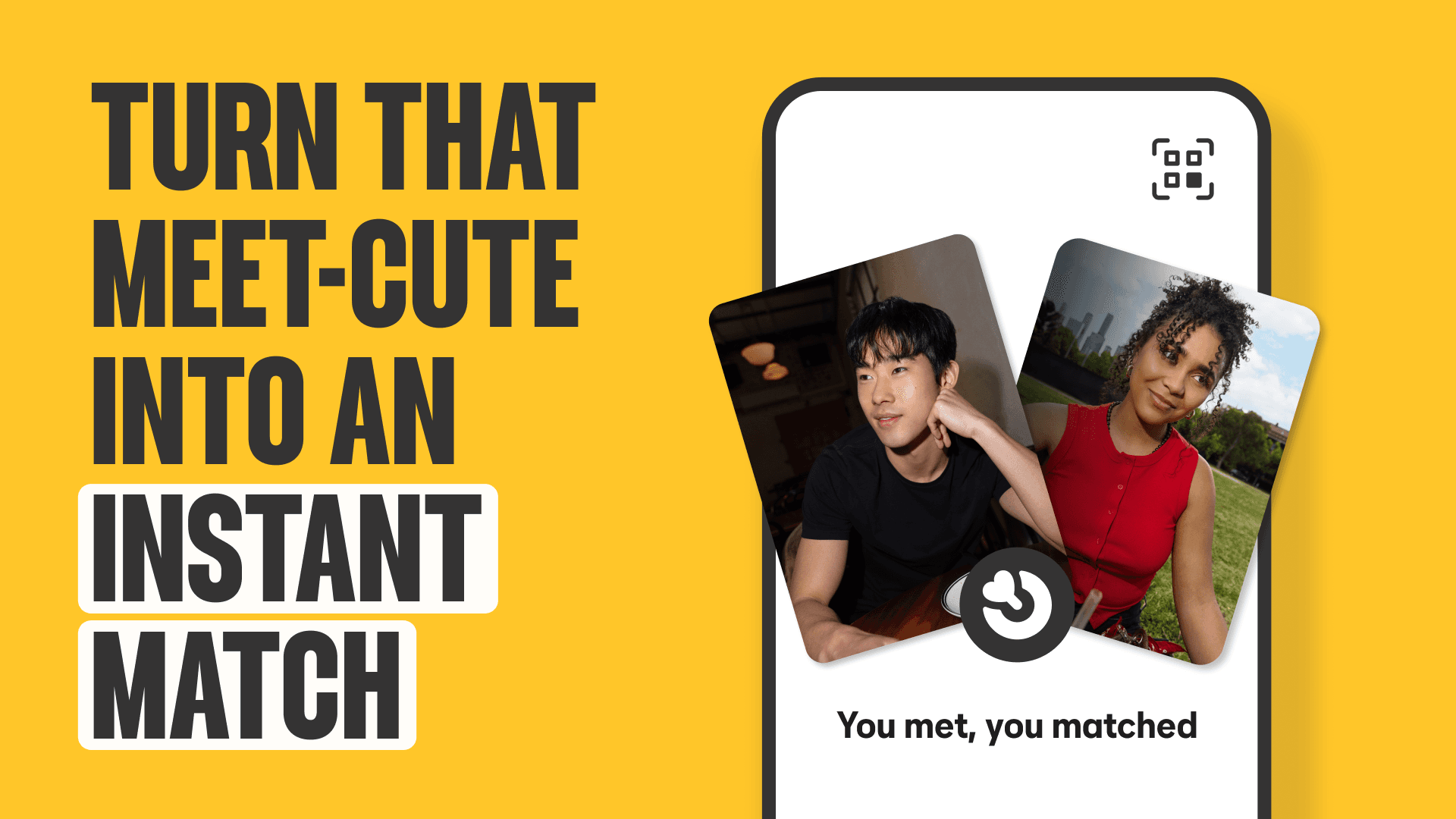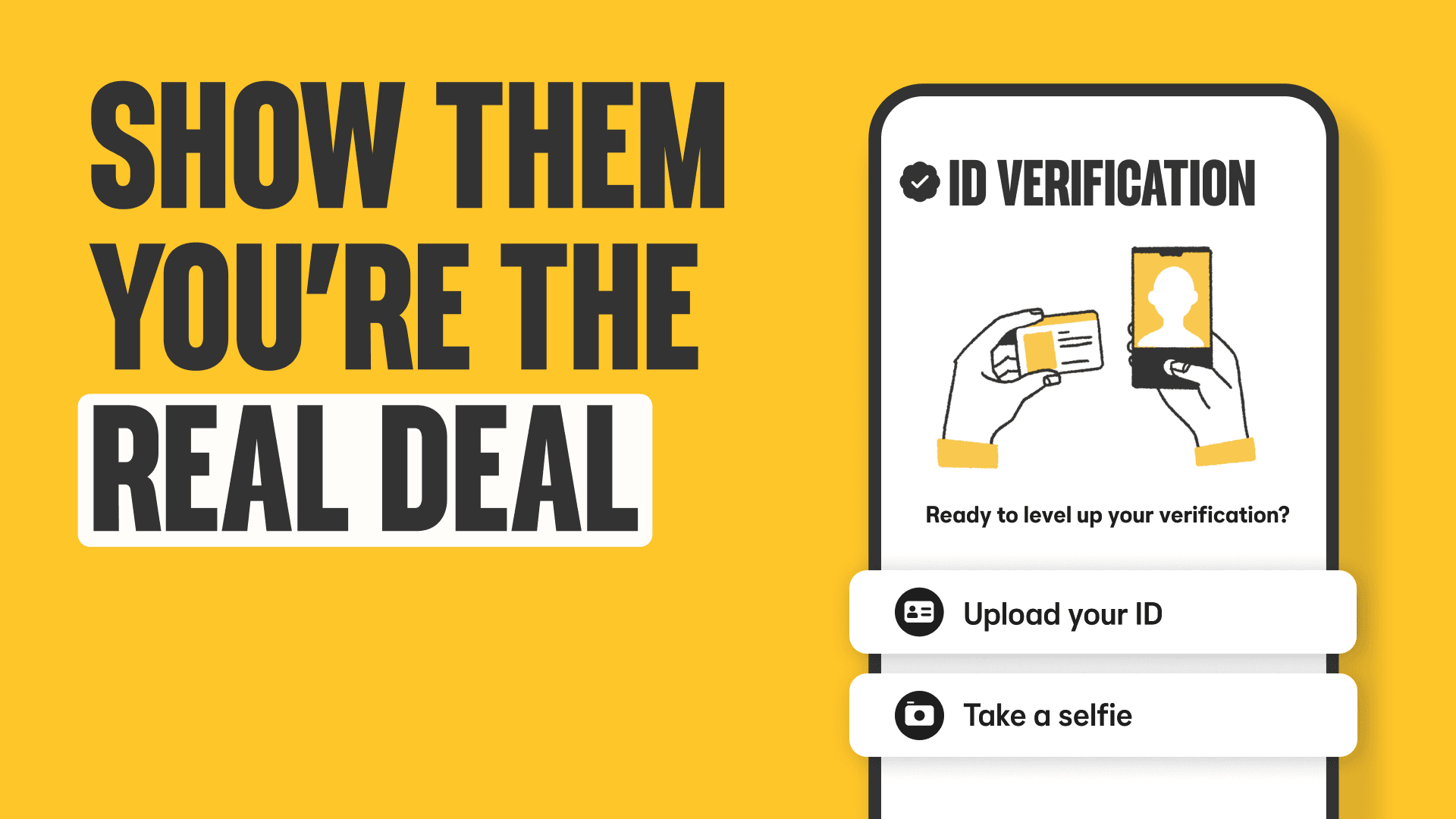Prioritizing your safety and looking out for red flags when using Bumble and Bumble For Friends is crucial, as unfortunately, catfishing still happens online. Catfishing is when someone creates a fake persona—in this case, a dating profile—with the intention to target a victim and compromise them in some way. The motivations of a catfish vary. Some have sinister intentions, like trying to scam folks into sending them money or sexual content; others can suffer from loneliness and self-esteem issues, so they use a fake profile to connect with new people.
Whatever the reason, catfishing is completely against Bumble’s values, and we’re always working to remove fake profiles from the app. Anyone found to have uploaded a fake profile or attempted to scam a Bumble member will be banned from our community. There are also some steps that you can take to stay safe. Here is how you can spot a catfish, and how to protect yourself from being exploited.
How to spot a catfish
If you see any of the following typical catfish signs on someone’s profile, or while chatting to them, you may want to be extra vigilant. Don’t hesitate to Block & Report anyone that makes you feel uncomfortable or that makes you suspicious that their profile may not be real.
Their profile photos look staged and there are no candid shots. When it comes to someone’s Bumble profile and their photos, “red flags include only having one photo of a very good-looking, model-like person, or a profile that seems too good to be true,” says psychologist and dating coach Dr. Madeleine Mason Roantree. “If a profile is showcasing images that resemble something from a glossy magazine, it’s less likely to reflect a real person.”
But the unfortunate truth is that catfishing profiles aren’t always easy to spot, and the perpetrator will use a variety of ways to target a victim. “This could be by saying they have an intriguing background, by flashing the cash—or alternatively, by having a very limited or even blank profile on show,” says cyber security specialist Jake Moore.
They never can meet up or video chat. One behavior typical of a catfish is that they’re super eager to see you, but something keeps cropping up, says Moore. The person might avoid meeting up because it could blow their cover if they don’t look or act like how they present themselves online. As a general rule, Dr. Mason Roantree says to “set a date for a meet up or video call within two weeks of chatting.” If they give continued reasons as to why they can’t, from unreliable WiFi to sudden crises, then keep your guard up. “If someone wants to meet up with you and they give three excuses in a row, then start to back off from that conversation,” says Moore.
They always want to focus on you. Catfish are known for being overly complimentary in the beginning as a way to lure you in. “Humans form bonds when they experience closeness and vulnerability,” says Dr. Mason Roantree. “People warm to those that make them feel good. Over a period of time, the recipient forms a bond and becomes attached, exposing them to exploitation.” It’s also typical for catfish to be avoidant when you ask about their lives. This is because they won’t have details to offer (as they’re not real!), and they’ll be trying to put all the attention on you in order to make you feel special. “Someone who is genuinely interested in you will volunteer details about their lives, as they will want you to know everything about them,” says Dr. Mason Roantree.
How to protect yourself from being catfished
As well as looking out for red flags, there are certain measures you can take to safeguard yourself from fakes when dating online.
Do your research. If you suspect that something is up with a match, make sure to do some quick research to find their social media profiles and cross-reference any information or photos with what they show on Bumble. “Catfish are looking for people that don’t do those failsafes at the beginning,” says Moore. Keep an eye out for signs that their social media is fake, like the account having very few friends or interactions, being new, or having no posts or only posts in the last six months. If after a cursory social media scan things aren’t adding up, Moore and Dr. Mason Roantree suggest reverse image searching the photos they include on their Bumble profile to see if they appear anywhere else on the internet. “You’d be surprised how lazy some catfish are,” says Moore.
Verify. Bumble’s Photo Verification feature reviews photos for authenticity and can help you certify that your match is using real pictures. (Find it on someone’s first profile photo by looking for a white shield with a blue star on it in the bottom right-hand corner.) If they don’t have it, you can also ask a match to verify their profile photos.
To verify someone in real time, Dr. Mason Roantree suggests: “Ask for a selfie in the moment or of them doing something that they couldn’t quickly source a fake image of.” To be even more certain, ask for a video call. Bumble has Video Chat and Voice Call features so you can see how they respond to questions in the moment, and casually double check claims from their profile: “How did you like school in Michigan?” If they flounder or avoid a video call altogether, you may want to discontinue conversation with them.
Hold back. In the early stages of chatting with someone, make sure you’re not revealing any sensitive personal information. Moore warns that if you say too much too quickly “you’re effectively giving away bits about yourself that may come into the conversation later and can be used to manipulate you.” Personal information can be anything from where you live, your email address and phone number, to less obvious things like classic security question answers like your first pet’s name or mother’s unmarried name.
Trust your gut. It may not be obvious, but checking in with yourself while using Bumble can help protect you from catfish. It’s helpful to ask yourself questions like: What am I looking for? Do I feel comfortable with the message they just sent? “Pay attention to any signs that come up and trust your gut, which is especially important when communicating online,” says Angela Lee, director at love is respect, a resource of the National Domestic Violence Hotline. Major red flags that apply to any match, not just a catfish, include them pressuring you to do anything you don’t want to do. If that happens, or if something just feels off or uncomfortable, it’s always okay to end the conversation or Block & Report the person. Bumble will look into it.
How to deal if you get catfished
If you discover that someone has lied on their profile or in conversation with you, it can be easy to become self-critical. But remember that catfish are methodical in their approach to hooking you in. “Humans are designed to be trustful, and everyone has the capability of being duped,” says Dr. Mason Roantree. When someone is saying all the right things and giving you all the signs of a blossoming relationship, it can be very hard to believe that your match is deceiving you. Don’t be hard on yourself, and seek out support if you need it. You can use the Block & Report feature on Bumble to report a catfish, or contact our support team at any time.
Catfish are out there, but they’re not in the majority. So, enjoy messaging your match—just know the signs and be sure they are who they say they are before you start emotionally investing in them.




Social Media